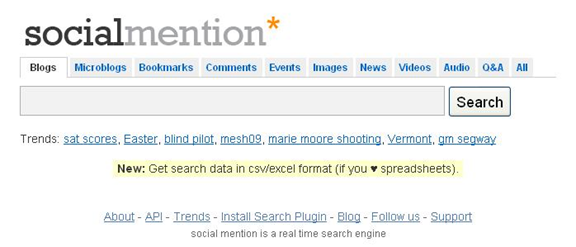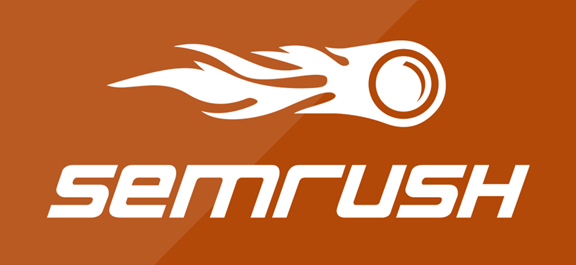No matter the business, industry or even if a company functions strictly online or with a brick and mortar store, competition abounds. Competition does come with its own benefits as it forces a business to improve and strive for excellence. With that said, in order for a company to succeed, it needs to understand what its competition is doing, how it’s doing it and why it’s doing it. Much like a key demographic, the more insights a company has on the competition, the easier it becomes to outflank marketing campaigns and even imitate. Here are 10 helpful tools every business needs to utilize in order to monitor the competition.
Google Alerts
(Source)
When creating a list of online tools, Google will almost always have a service listed. The company strives to provide helpful insights to users of its ecosystem. While there are several services offered by the company, Google Alerts remains critical (and unique).
The tool itself is straightforward and easy to use, so it doesn’t take much of a time investment (it’s also free). When using Google Alerts, all a business needs to do is enter the names of particular products, companies or anything else of interest.
From here, Google provides updates whenever the desired term appears in a new post or mention. It doesn’t need to be an original blog post from the company. It can be a review from a trade magazine or updates on a new service.
It’s helpful for a company to monitor itself with Google Alerts as well. With this help, a company knows when a new review appears. If the review is less than stellar, it makes it possible for the business to act quickly, contact the reviewer or even have the review site take it down, if it’s less than authentic.
Instapaper
(Source)
When following another company, whether directly through a social media service or one of the listed tools, it isn’t always possible to drop everything and read up on the insights. This often means the information goes unread altogether. This is where Instapaper comes in.
Instapaper works like a bookmarking service. It gives a business the ability to save blog posts, articles, product reviews and other insights for later reading. By using the tool, a company can avoid dropping everything and instead look over the information when they have a chance to do so.
One of the best features of the Instapaper is it automatically optimizes the content. Instead of pinching, scrolling and zooming in on different blog posts and Web-published content; it opens perfectly on a particular device, whether it’s a laptop or smartphone.
The data also syncs with a user account, so it’s not necessary to always remain on the same device. A user can bookmark it on their smartphone and later view it on their computer when back at the office.
Much of business is finding ways to save time and better invest it. Instapaper helps do exactly that.
WhatRunsWhere
(Source)
The competition runs advertisements. This is known. However, what isn’t always known is where the advertisements appear and whether or not the content is successful. With the help of WhatRunsWhere, it’s possible to know all of this.
The tool sifts through information to pinpoint where the competition is advertising and what sort of traffic the ads are generating. The provided analytical data includes what devices are used to view the ads, the location of users and even the time of when ads are most popular.
WhatRunsWhere offers valuable insights into a competitor’s marketing and what works or doesn’t. However, it does come with a heftier price tag. The service itself has an intro base package at $299 per month.
Social Mention

(Source)
Social media has become a must for any business. It opens up the potential of connecting with a target audience around the world. However, unless a follower directly links, posts a specific hashtag or sends a direct message, it’s not always possible to know when a company is actually mentioned on social media.
This is where the Social Mention tool comes in. This tool works in a similar manner to Google Alerts, only for social media. This way, when someone comments about a company on Facebook, even if it’s not directly linked or tagged, a company will know about it.
With word spreading fast on social media, staying on top of when someone posts a negative comment is extremely important. This can prevent the negative comment from circulating to hundreds, if not tens of thousands of other social media users.
It’s a free service, doesn’t take long to set up and provides helpful insights into what the outside world thinks of a business. On top of this, Social Mention allows a company to monitor the competition as well. One of the advantages of this is when a customer reviews a competitive business poorly. Should this occur, the monitoring business has the opportunity to move in and offer its own service. With a disgruntled customer, they become more likely to test out a different service provider.
iSpionage

(Source)
With so much going into keyword monitoring, it’s important to look at keywords from every angle. iSpionage offers additional information and insights into the keywords used by a competing website.
Reports offered by iSpionage include the current advertisements used (and where), landing page performance, keywords and the amount of traffic generated by each.
The vast majority of keyword trackers focus specifically on Google. While Google does generate more search traffic than all other search engines combined, it’s important to focus some attention on the others. iSpionage monitors data from Yahoo and Bing, which may improve the overall analytical overview of a competing website.
Some companies may choose to advertise on Bing or Yahoo instead of through Google services thanks to the reduced price point. When other monitoring services fail to look into Bing and Yahoo it’s missing extremely important information.
By looking at the three different search engines, iSpionage offers a complete monthly marketing budget for what the competition is likely paying for search engine based marketing.
There are four price points with this. A “Basic” $29 per month, a “Starter” at $59 a month, a “Professional” at $99 a month and a $299 “Advanced” option per month.
SEMRush

(Source)
The Internet revolves around keywords. While the method for which these keywords are used and identified has changed repeatedly over the last decade, it hasn’t changed the level of importance. Knowing what keywords perform well and what keywords the competition uses is a crucial aspect of modern marketing and search engine optimization. This is what makes SEMRush a powerful and necessary tool to take advantage of.
On the home page of the service, it allows a user to type in the homepage for any website (whether it is the company’s own page or the competition’s). SEMRush then provides a wide range of analytical data, including traffic, using keywords in advertisements, organic keywords, traffic sources and other helpful information.
The data is provided in easy to read graphs and displays. The service also allows a user to directly compare two different websites. So if a business wishes to compare itself with that of a competing site, all it needs to do is input the two different domain names.
SEMRush also provides keyword ideas, based on the competition and the company’s own performance. This way, the business has the latest data, to go off of when customizing new blog posts, marketing material or updating its general site.
There are a few different price points. The first is a $99.95 a month “Pro” option. The second is a $199.95 “Guru” plan. The third is a $399.95 “Business” monthly plan. The company also offers an “Enterprise” plan with additional features built around the company needs.
Woorank
(Source)
Building off of what SEMRush offers, Woorank provides similar, yet slightly different information. It performs a complete and in-depth audit of a specified website. This audit is easy to request as all it takes is a single domain entered into the search field.
With the comprehensive tools, a company can monitor the new visitors, page views, bounce rate, keywords, users and session durations (among other analytical data) of a competitive website.
On top of the website SEO audit, it also offers a social media audit. The audit is updated weekly and shows how the competition’s social media platforms perform, including how often it posts to the different platforms, what content receives the most interactions, hashtags used, comments received and other valuable data a company can use to build its own social media presence.
There are several price points after a 14-day free trial. The “Pro” is $49.99 a month. The “Premium” is $149.99 a month. And the “Enterprise” is $249.99 a month.
Alexa
(Source)
The digital assistant has become increasingly popular over the last several years. Not only does it allow individuals to control thousands of different devices with a single request, but also it connects to the Internet to offer answers and suggestions based on top performing websites.
There is more to Alexa than meets the eye though. Alexa has a built-in competitor analysis tool. For starters, the Alexa Marketing Stack tool helps identify competition. There are times where a business may not know its competition or certain parties within its competition. Alexa helps with this.
Based on specific requests, Alexa provides what companies perform the best and offers insights into how the competition stacks up. Alexa may track websites and offer real-time information.
Beyond the additional competitive analytical data, Alexa provides insights into possible partnerships. This includes sites suitable for guest blogging and what influencers might provide the best showcase for a company’s own products and services.
There are several price points for this (each of which come with a 7-day free trial). The first is a $99 a month “Essential” plan. The second is a $149 “Advanced” plan and the third is a $299 a month “Agency” plan.
SpyFu
(Source)
One crucial step in monitoring the competition is knowing where the other websites rank on search engines. A company can search the competition on a daily basis, but it doesn’t provide insights into search engine history. This is where SpyFu proves helpful.
SpyFu looks over an entered domain and instantly provides information as to where the website has ranked over the past 11 years with specific keywords. The service then shows what has gone into the change of ranking. This may include a shift in keywords, the company buying Adwords or supplementing the ranking with additional marketing material.
With this information, a company can more or less see a comprehensive game plan for the competition’s marketing department and what has gone into these changes in search engine optimization.
SpyFu offers added insights on top of this as well. This includes current backlinks, used keywords, blog posts with higher search engine rankings than the searching company.
With this information, it becomes easier for a business to adjust its current search engine optimization and advertising campaign to boost traffic and search results.
There are a number of pan options. The Basic play is $33 a month with unlimited search, data exports and domain overviews, plus 250 sales leads, 5,000 weekly tracked keywords and 10,000 top list results. The “Professional” play runs $58 a month, and increases sales leads to 500, weekly tracked keywords to 15,000 and 50,000 top list results. The “Team” plan runs $199 a month and boosts to 2,000 sales leads, 40,000 weekly tracked keyword rankings, 75,000 top list results, and five user logins.
Monitor Backlinks
(Source)
Quality backlinks play an important role in search engine optimization. It shows a website offers quality content and is seen as a respected source. While a company needs to focus on building its own backlinks, it should also monitor the backlinks of a competitor’s site.
With the Monitor Backlinks tool, it’s possible to see what other sites currently link up with the competition. This is a helpful service as a company can determine what may be helping the competition boost its SEO. It also shows what sites send in additional traffic to the competition. With this information, the business may decide to reach out to these backlink sources and look for ways to offer its own services.
Monitor Backlinks isn’t just a tool for monitoring the competition though. A business should use it on itself to see how it’s doing and where traffic comes from. While the built-in analytical tools for a website may already provide some of this information, Monitor Backlinks takes it to the next level. Understanding traffic sources makes it easier to produce new content and blog posts based on where traffic comes from.
Thre are several different price point options available (each of which is cheaper when paid for yearly). The “Startup” option costs $21 per month and allows for a single monitored domain, two competitor domains, 500 referring domains, 50 keywords, 10 on-demand credits and a single user. The $40 a month “Freelancer” option is two monitored domains, four competitor domains, 2500 referring domains, 200 keywords, 20 on-demand credits, two users and an export option. The $75 a month “Small Business” option allows for four monitored domains and competitor domains, 5000 referring domains, 400 keywords, 40 on-demand credits and four users while the top, $120 “Agency” option allows for seven monitored domains, four competitor domains, 8750 referring domains, 700 keywords, 70 on-demand credits and five users.
In Conclusion
In the world of business knowledge is power. The more a company knows about the competition the better off it is and the easier it becomes to formulate productive marketing campaigns. While these are 10 of the more helpful tools out there for businesses of all shapes and sizes, it’s crucial for a company to experiment and analyze the tools. This way, it can take advantage of the analytical information presented by the insights.











